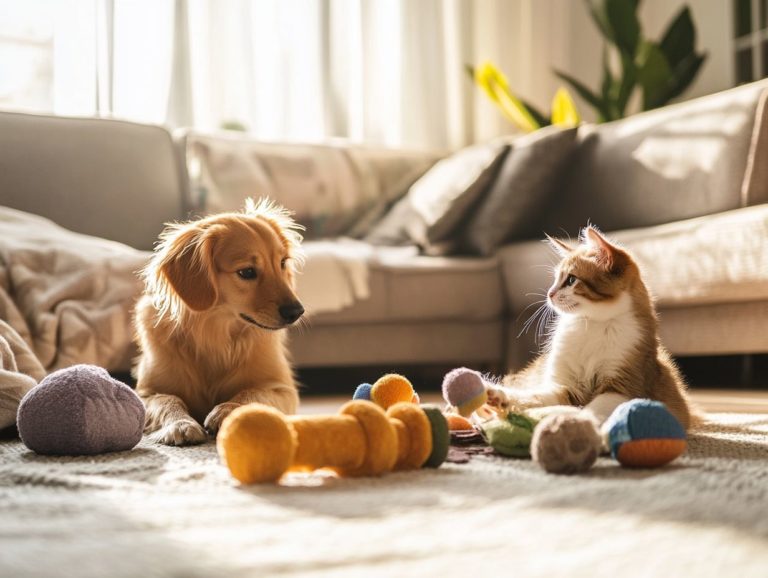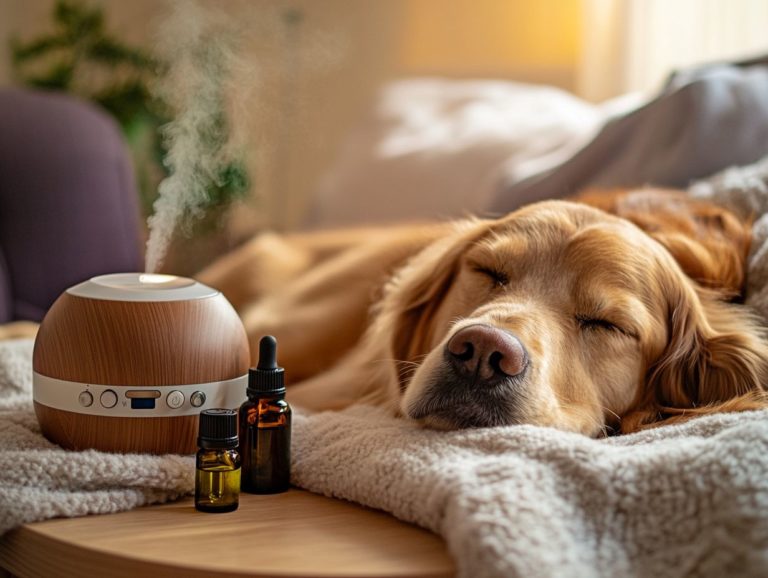Non-Anxious Pet?
Pet anxiety can have a profound impact not only on your furry companions but also on your own well-being. Grasping the underlying causes and triggers is essential for creating a calm home. Let s dive in and learn how to help your furry friend feel safe and happy!
This article explores the signs of a relaxed pet, the many benefits they bring to your life, and useful tips to help your pet feel more secure and at ease.
You will also learn how to create a calming atmosphere and recognize when it might be time to seek professional assistance. Embark on this journey to uncover ways to nurture a happier, more relaxed pet in your life!
Contents
- Key Takeaways:
- Understanding Pet Anxiety
- Signs of a Non-Anxious Pet
- Benefits of Having a Non-Anxious Pet
- How to Help Your Pet Become Non-Anxious
- Maintaining a Non-Anxious Environment for Your Pet
- When to Seek Professional Help
- Frequently Asked Questions
- Are there any natural remedies for pet anxiety?
- Are certain breeds more likely to have anxiety?
Key Takeaways:
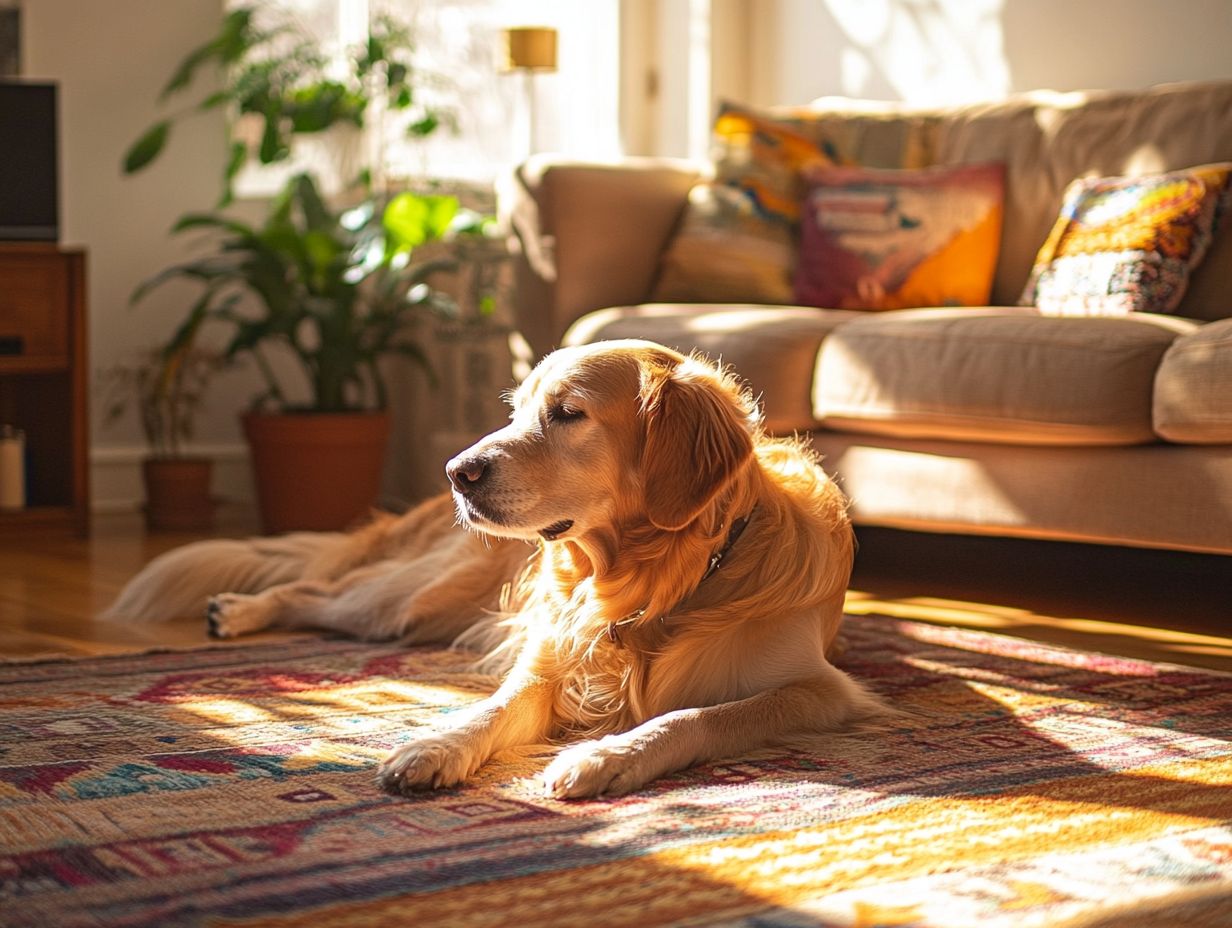
- A non-anxious pet can bring positive benefits to both the pet and their owner, creating a peaceful and stress-free home environment.
- Understanding the potential causes and triggers of pet anxiety can help pet owners prevent and address anxiety in their furry companions.
- With proper training techniques and a calming environment, it is possible to help your pet become less anxious and live a happier, healthier life.
Understanding Pet Anxiety
Understanding pet anxiety is essential for you as a dog owner, as it covers a range of conditions that can profoundly impact your dog’s emotional health and behavior.
From separation anxiety that arises when they’re away from you to fear-related anxiety triggered by loud noises or unfamiliar environments, recognizing the signs and common causes is crucial for effective intervention.
Older dogs may show anxiety due to aging-related issues, which can add another layer of complexity to the problem. Identifying these challenges is a critical first step in crafting a treatment plan tailored to meet the unique needs of your beloved pet.
Causes and Triggers
The causes and triggers of dog anxiety are diverse and can range from environmental influences to genetic factors. You might find that separation anxiety is particularly prevalent, often arising from sudden changes in routine or the absence of the owner.
Fear-related anxiety can also emerge from traumatic experiences or loud noises. Knowing these triggers is vital for dog owners, especially when it comes to effectively addressing your pet’s anxiety symptoms.
Take Basset Hounds, for example. Their strong family attachment can make them particularly sensitive to being left alone, which may lead to destructive behaviors or excessive barking.
On the flip side, French Bulldogs, with their affectionate disposition, might panic at common stimuli like thunderstorms, showing signs such as pacing or trembling.
The psychology behind these reactions often ties back to the dog’s past experiences and inherent temperament. By recognizing specific triggers, you can implement tailored strategies to address these needs, ultimately fostering a calmer environment for your beloved pet.
Signs of a Non-Anxious Pet
Recognizing the signs of a non-anxious pet is crucial for dog owners aiming to maintain their dogs’ emotional well-being and happiness.
A non-anxious pet usually displays relaxed body language, participates in playful activities, and eagerly engages in social interactions without any signs of distress. To better understand what constitutes anxious behavior, you can explore understanding anxious behaviors in pets.
By knowing these signs, you can keep your pet happy and secure! Observing these behaviors allows you to distinguish between normal actions and anxiety indicators, creating a more harmonious living environment for your furry companion.
Behavioral Indicators
Behavioral indicators of anxiety in dogs can show up in various ways, such as excessive barking or destructive chewing. It s essential for dog owners to recognize these anxiety symptoms, as they offer valuable insights into your pet’s emotional state. By employing positive reinforcement strategies, you can effectively address these behaviors and encourage a more relaxed demeanor.
Take notice! While a typical dog might wag its tail joyfully or greet guests with enthusiasm, an anxious dog may display signs like lowered ears, avoidance of eye contact, or pacing. These contrasting behaviors emphasize the significance of paying attention to subtle changes in your dog’s actions. Unwanted behaviors, such as digging or whining, often act as distress signals.
By using positive reinforcement techniques, you can redirect your pet’s focus away from anxiety-driven activities, creating an environment where they feel safe and secure. Consistency in training not only teaches your dog but also deepens the bond between you and your furry friend.
Benefits of Having a Non-Anxious Pet
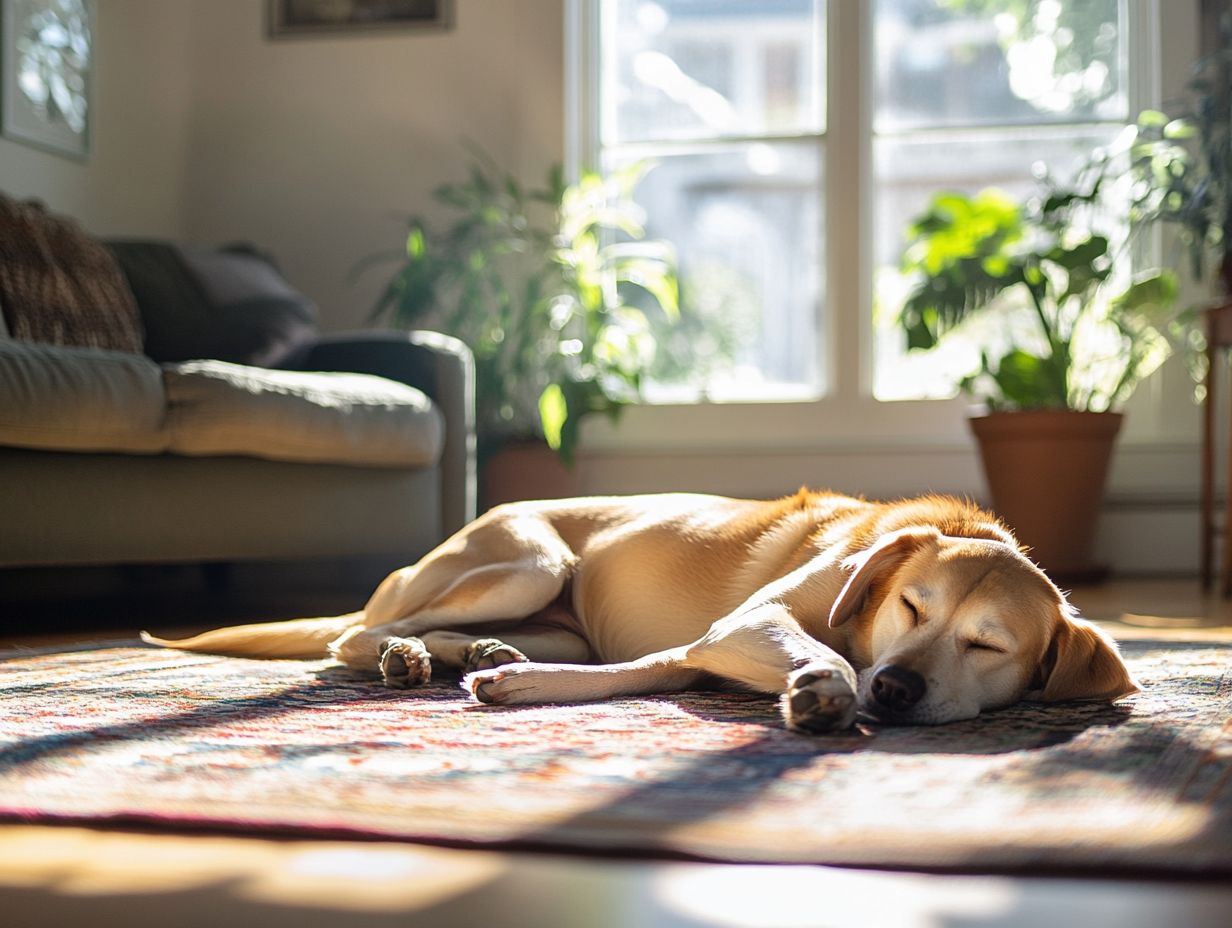
The advantages of having a non-anxious pet extend well beyond simple companionship; they encompass substantial enhancements in emotional well-being for both you and your dog. A calm and relaxed dog creates a serene atmosphere, effectively lowering stress and anxiety levels for you as well.
This shared emotional stability paves the way for a more enriching relationship, enabling you to fully enjoy activities together, free from the concerns of anxiety-driven behaviors.
Positive Impact on Pet and Owner
The positive impact of a non-anxious pet is evident in the enhanced emotional health of both you and your furry friend. By implementing effective training strategies that emphasize positive reinforcement, you can create a tranquil atmosphere. Understanding anxiety triggers in pets can further benefit everyone involved.
This harmonious relationship not only enriches your pet’s life but also brings you a profound sense of fulfillment and joy. Fostering this connection helps you build a stronger bond rooted in trust and understanding.
Techniques like consistent commands, engaging playtime, and rewarding desired behaviors shape good habits while boosting confidence for both you and your pet. When your pet feels secure, you ll likely notice a decrease in your own anxiety and stress levels, creating a lovely cycle of positivity.
Shared activities, such as training sessions or walks, become valuable opportunities for interaction, reinforcing your companionship and emotional well-being. This mutual exchange plays a significant role in creating a vibrant household where both you and your pet thrive emotionally.
How to Help Your Pet Become Non-Anxious
Helping your pet overcome anxiety requires a thoughtful, multi-faceted approach that involves creating a comprehensive treatment plan tailored to your dog s unique needs.
Implementing effective training strategies focused on changing your dog’s behavior for the better can help address unwanted behaviors. Additionally, natural therapies, such as CBD oil derived from hemp and used to help reduce anxiety in pets can provide additional support.
Collaborating closely with a veterinarian will offer you valuable insights into the most suitable methods for alleviating your dog s anxiety symptoms.
Training Techniques and Tips
As a dog owner, using effective training techniques is crucial for reducing anxiety in your pet, with positive reinforcement standing out as one of the most successful strategies.
By focusing on rewarding good behavior instead of punishing undesirable actions, you create a trusting and secure environment for your dog. Incorporating training exercises, such as interactive games that stimulate the mind, can promote mental agility, benefiting pets who may be experiencing problems with thinking or memory.
Using simple techniques, like gradually introducing anxiety-inducing stimuli whether it’s loud noises or new environments allows your dog to acclimate without feeling overwhelmed. Regularly practicing these strategies establishes consistency, which is crucial for behavior modification, ultimately leading to a more balanced and content canine companion.
Maintaining a Non-Anxious Environment for Your Pet
Establishing a non-anxious environment for your pet is essential for their emotional well-being, allowing them to feel secure and at ease in their surroundings. Understanding anxiety in new pets can further enhance this process.
You can create this atmosphere by designating a calming space where your dog can retreat when they feel overwhelmed. Incorporating mental stimulation through a variety of toys and engaging activities will promote a more relaxed demeanor, fostering a stress-free environment that benefits both you and your beloved pet.
Creating a Calming Space

Creating a calming space for your pet is a vital step in reducing anxiety and fostering a sense of safety. Make sure this space is cozy and quiet your dog will love having a peaceful retreat!
This area should be comfortable and free from distractions, allowing your dog to retreat when feeling uneasy. By implementing training strategies that reinforce the use of this sanctuary, you can encourage your pet to seek it out during stressful moments.
For the best results, select a location in your home that s away from busy areas think of a cozy corner or a secluded room. The bedding should be inviting; consider soft blankets or a plush dog bed that beckons your furry friend to snuggle up.
Essential toys that promote soothing behaviors, like chew toys or interactive puzzles, can enhance this nurturing experience. You can also add calming scents like lavender to create an atmosphere conducive to relaxation, making your dog feel safe and secure whenever anxiety symptoms arise.
When to Seek Professional Help
Recognizing when to seek professional help for your dog s anxiety is essential. In some situations, the expertise of a veterinarian is necessary to craft an effective treatment plan.
Look for signs that indicate professional intervention is warranted, such as severe anxiety symptoms that endure despite your best home-based efforts or destructive behaviors that could jeopardize your dog’s safety.
In these cases, a veterinarian may recommend anxiety medications, which are medications that help calm your dog, to bolster your pet s emotional well-being.
Identifying Severe Anxiety and Seeking Treatment
Identifying severe anxiety in your dog is crucial for timely intervention and effective treatment. Look out for symptoms like uncontrollable barking, excessive chewing, or signs of distress during routine activities these may signal a higher level of anxiety that calls for a veterinarian’s expertise.
By developing a comprehensive treatment plan with a professional, you can significantly enhance your dog’s well-being and emotional health.
Other indicators, such as trembling, aggressive behavior, or frequent accidents indoors, can also highlight underlying anxiety issues. Recognizing these symptoms early can make a big difference in your pet’s happiness!
Seeking veterinary guidance is your first step in tackling canine anxiety. A thorough assessment helps create tailored strategies to meet your dog’s specific needs. An effective treatment plan may include:
- Behavioral therapy: This involves training techniques to help reduce anxiety.
- Environmental modifications
- Medication, if necessary, to provide relief and foster a sense of security for your affected dog.
Frequently Asked Questions
What is a non-anxious pet?
A non-anxious pet refers to a domestic animal that does not experience excessive levels of fear or nervousness in common or unfamiliar situations. To better support your furry friend, it’s important to explore understanding the needs of anxious pets.
What are some common signs of anxiety in pets?
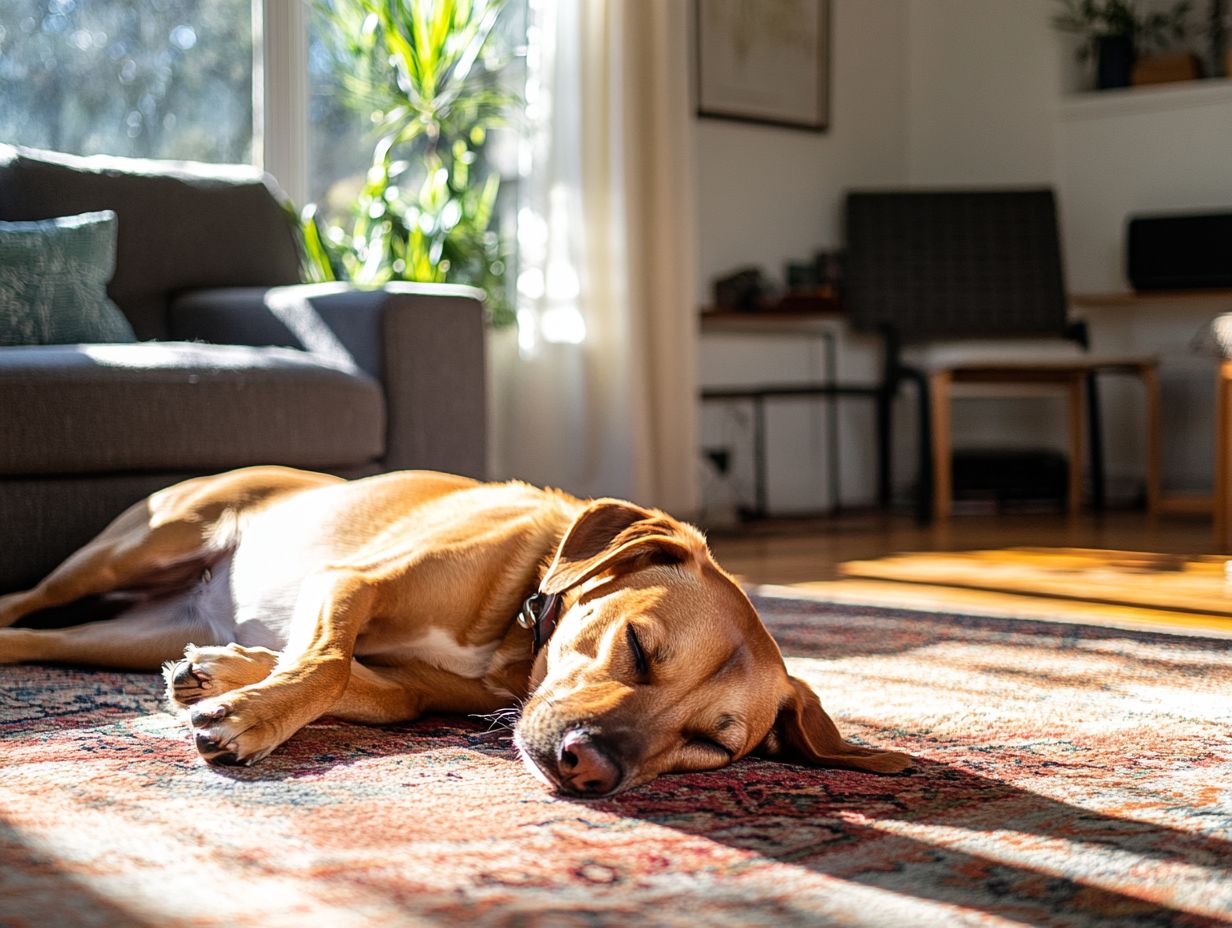
Signs of anxiety in pets can include excessive barking or meowing, destructive behavior, hiding, shaking or trembling, and repetitive behaviors like pacing or licking.
Can pets develop anxiety?
Yes, just like humans, pets can develop anxiety due to a variety of factors such as past trauma, genetics, or changes in their environment.
How can I help my pet overcome anxiety?
It is important to first identify the source of your pet’s anxiety and then work with a professional, such as a veterinarian or animal behaviorist, to develop a treatment plan. This may include behavior modification techniques, medication, or environmental changes.
Are there any natural remedies for pet anxiety?
Many pet owners have had success with natural remedies like herbal products or essential oils.
Always check with your veterinarian before trying any new treatment!
Are certain breeds more likely to have anxiety?
Any pet can experience anxiety, but some breeds are more prone to it.
For example, dogs like Shetland Sheepdogs and Border Collies may struggle more than others.





